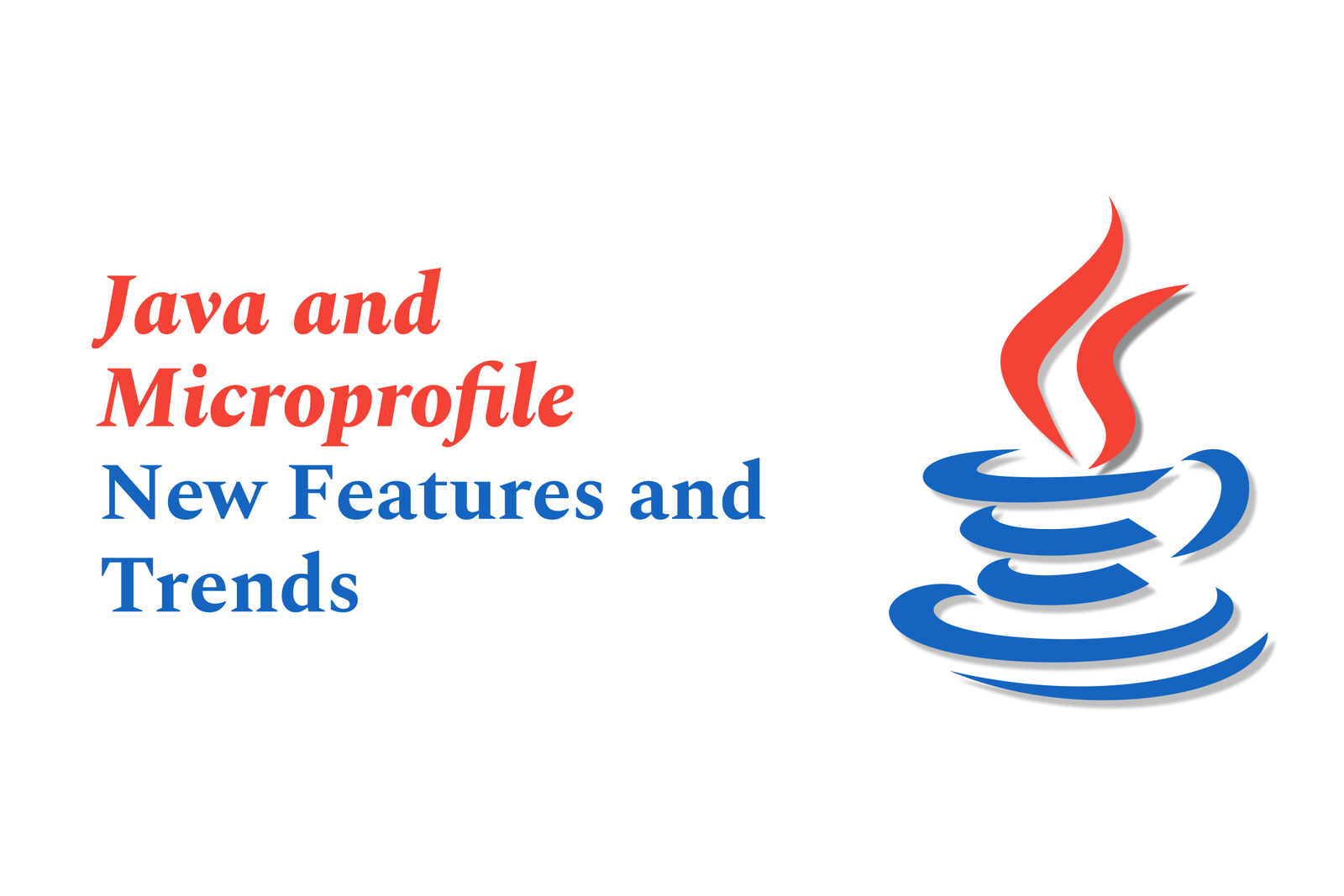Java and MicroProfile: New Features and Trends
Java continues to evolve with the latest SE releases enhancing performance and features, while MicroProfile drives modern microservices development by standardizing APIs like telemetry, fault tolerance, and REST clients—enabling streamlined, resilient, and cloud-native Java applications.
Java and Microprofile: New Features and Trends
1 ) Introduction to Java and MicroProfile
Java continues to be a key programming language powering digital innovation.
MicroProfile is an open forum that optimizes Enterprise Java for microservices architecture through collaboration and standardization.
The latest major MicroProfile release is version 7.1 (released June 2025 ), which updates Telemetry and OpenAPI specifications.
2 ) Latest Java Platform Developments
Java SE 24 is the latest Java SE Platform release, free to use and supported until September 2025.
Java SE 21 remains the Long Term Support (LTS) release.
Oracle and OpenJDK provide multiple packages supporting diverse platforms (Linux, macOS, Windows) and architectures (x64, ARM64 ).
3 ) MicroProfile Specifications Overview
MicroProfile 7.1 incorporates major updates to Telemetry (2.1 ) and OpenAPI (4.1 ).
Other key specifications include Rest Client 4.0, Config 3.1, Fault Tolerance 4.1, JWT Authentication 2.1, Health 4.0, Metrics 4.0, and Core Profile.
MicroProfile 5.0 aligned with Jakarta EE 9.1 introduces namespace changes impacting compatibility.
4 ) MicroProfile 7.1 Key Features and Updates
Enhancements in MicroProfile Telemetry improve metrics and tracing for microservices.
OpenAPI 4.1 update refines API documentation and interaction.
Rest Client improvements allow type safe, declarative HTTP calls via annotated Java interfaces, facilitating separation of business logic and REST configuration.
Fault tolerance and health check updates bolster microservice resilience and observability.
Support for OpenID Connect, JWT security, and secure communication with TLS certificates.
5 ) MicroProfile Compatible Implementations
Popular runtimes supporting recent MicroProfile versions include Open Liberty, Quarkus, Payara, and WildFly.
Implementations certify compatibility with Java 8 to Java 17 and above.
Payara Platform 5.182 introduced MicroProfile REST Client 1 )3 with OpenTracing and OpenAPI support.
6 ) MicroProfile Development and Community
Community driven development allows contributions, idea sharing, and collaboration to evolve MicroProfile.
The MicroProfile Working Group publishes specifications under Eclipse Foundation licenses.
Various guides and resources support developers adopting MicroProfile for cloud native, containerized Java microservices.
7 ) Java and MicroProfile Ecosystem Tools
Open Liberty offers features modularized as units for targeted runtime configuration.
MicroProfile supports features for configuration, fault tolerance, health checks, metrics, JWT Authentication, OpenAPI, OpenTracing, reactive messaging, and telemetry.
Developers utilize modern dependency injection (CDI), JAX RS, JSON B, and JSON P APIs within MicroProfile environments.
Summary:
Java remains a foundational language with continuous evolution in Java SE releases, while the MicroProfile project actively shapes Enterprise Java’s trajectory toward microservices. The recent MicroProfile 7.1 release focuses on enhanced telemetry and API specifications to streamline microservice development, monitoring, and security. Supported by multiple compatible runtimes, MicroProfile promotes standardized, flexible, and robust Java microservices architectures in modern cloud environments.
https://justacademy.in/news-detail/ios-19-new-game-controller-support-and-apis
https://justacademy.in/news-detail/android-app-beta-testing-news
https://justacademy.in/news-detail/building-secure-apple-pay-experiences-with-ios-19
https://justacademy.in/news-detail/performance-testing-in-flutter-4.0
https://justacademy.in/news-detail/flutter-internships-&-mentorships-2025
Related Posts
In 2025, top Angular libraries offer modern, feature-rich components and tools for building dynamic web apps. From powerful data grids to low-code platforms like UI Bakery, these libraries enhance development speed, UI design, and scalability, making them essential for Angular developers.
Migrating from AngularJS to Angular 17 involves gradually upgrading your app by running both frameworks together using tools like ngUpgrade, rewriting components in TypeScript, and adopting Angular’s modern architecture to enhance performance, maintainability, and long-term support.
Angular state management tools help organize and handle app data efficiently, improving scalability and maintainability. Popular options include NgRx for robust, RxJS-based patterns, and newer Signal Store solutions that offer simpler, reactive approaches integrated tightly with Angular’s latest features.
RxJS in Angular empowers developers to manage asynchronous data streams with powerful operators like `forkJoin`, `combineLatest`, and `zip`. Mastering these key operators in 2025 is essential for building efficient, reactive applications that handle complex event sequences seamlessly.
Angular performance optimization in 2025 focuses on improving app speed and responsiveness by using techniques like OnPush change detection, lazy loading, efficient data caching, and AOT compilation. These practices reduce load times, enhance user experience, and ensure scalable, fast Angular applications.
In 2025, Angular remains preferred for large-scale, enterprise apps with its robust, all-in-one framework, while Vue attracts developers seeking simplicity and fast development for smaller projects. Both frameworks excel, with choice driven by project needs and team expertise.
Angular Signals are a new reactive primitive in Angular 16 that enable fine-grained, efficient change detection by automatically tracking dependencies and updating only affected parts of the UI. They simplify state management and boost app performance, revolutionizing Angular's reactivity model.
Angular interview questions to prepare in 2025 focus on core concepts like components, directives, data binding, routing, and dependency injection, along with TypeScript mastery and latest Angular features to ensure strong practical knowledge for building scalable, efficient web applications.
AngularJS reached its official end of support in January 2022, meaning no further updates or security patches. To ensure app security and performance, developers should consider migrating to modern Angular versions or seek third-party long-term support options if immediate migration isn’t possible.
The Angular Roadmap 2025 highlights upcoming features focused on improving developer experience and performance, including zoneless Angular, Signals integration, enhanced Forms, async data handling, improved HMR, and expanded Angular Material/CDK enhancements, driving modern, efficient web app development.










